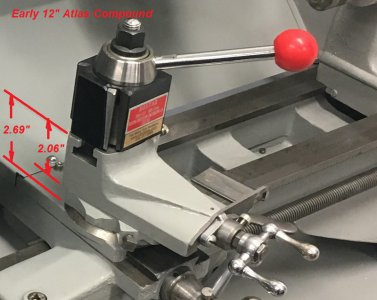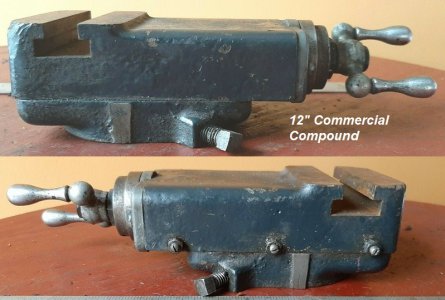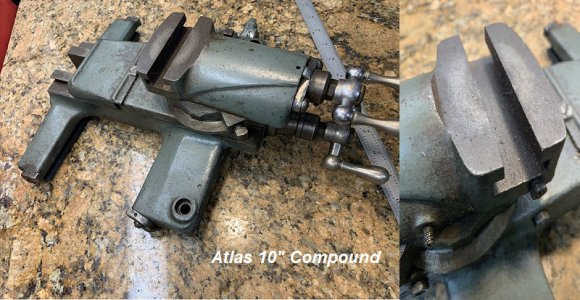- Joined
- Feb 23, 2019
- Messages
- 11
Not sure if I could watch him cut the compound again? gets me shaking too much.
I need a beer!
I need a beer!
What is the overall length you chose?Here it is nearly complete notice the differance in length compared to the stock one. When these started to break and I have seen a lot of them you would have thought Atlas would have fixed the problem but since they could sell more parts they just kept going with a bad design
.....and what was the rationale for why they did that?As you can see the original has the nut off center
What is the overall width? Is the dovetail width the same on the commercial version of the slide?Here it is side by side with a stock unit notice how much wider


 www.hobby-machinist.com
www.hobby-machinist.com
Too bad. Thanks for letting know Brino.Just an FYI, unfortunately user @iron man hasn't been here in a almost two years:
Thanks for that Robert. Seemed like the dovetails would be the same. I guess I figured the 10" compound sat an inch lower and the even though the ways are thicker on the commercial, the head stock, tail stock, and carriage all sit on top the ways so I was guessing the commercial 12" compound was the same height as mine, albeit, apparently wider.The cross slide dovetail must be the same as the early and late taper attachments fit and the follow rest is the same. The gibs for the cross slide and the compound slide are the same so the lengths must be about the same. And the dimensions of the pintle (the inverted truncated cone on top of the cross slide must be the same as the same Milling Attachment fits...........However, the compound slide is not nearly as tall because the early 12" compound upper slide is the only part on the carriage assembly that is not the same as on the 10" version (not counting the longitudinal and cross feed interlock). So the 1" total difference in height between 10# and 12" was made up in the compound slide. On the so-called Commercial 12", the saddle is taller and heavier than the one on the 10" and early 12" was
Pierre, My lathe is an earlier (circa 1937) 12" Craftsman. It's story is here....and thank you for the link to your custom compound.Not sure on what size lathe Kelly has. On my 10” the gibs were the same on cross section but the cross slide gib was longer than the compound one. 4 screws vs 3 if my memory is not faulty. Kelly here is my posting.

 www.hobby-machinist.com
www.hobby-machinist.com



